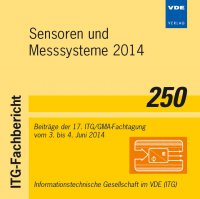Surface-enhanced silicon resonant cantilever sensors with vertical nanowires
Conference: Sensoren und Messsysteme 2014 - Beiträge der 17. ITG/GMA-Fachtagung
06/03/2014 - 06/04/2014 at Nürnberg, Deutschland
Proceedings: Sensoren und Messsysteme 2014
Pages: 6Language: englishTyp: PDF
Personal VDE Members are entitled to a 10% discount on this title
Authors:
Wasisto, Hutomo Suryo; Merzsch, Stephan; Steib, Frederik; Waag, Andreas; Peiner, Erwin (Institute of Semiconductor Technology (IHT), TU Braunschweig, Braunschweig, Germany)
Uhde, Erik (Material Analysis and Indoor Chemistry (MAIC), Fraunhofer WKI, Braunschweig, Germany)
Abstract:
In this paper, silicon nanowire (SiNW) array-patterned microcantilever sensors excited in the in-plane resonance mode have been designed, fabricated, characterized, and used for enhanced detection of atmospheric aerosols (i.e., cigarette smoke and carbon black aerosols). The selective surface modification of the cantilever is mainly performed by a combination of nanoimprint lithography (NIL), photolithography, and inductively coupled plasma (ICP) cryogenic dry etching. Diameter and aspect ratio of the vertical SiNWs can be adjusted depending on the nanoimprint stamp and etching performance, with the currently realized cylindrical structure diameter of 300 nm and varied aspect ratios of 3 – 7. In resonance characterization, the fabricated sensors exhibit high measured quality factors (Q-factors) of 7000 ± 1300 during in-plane mode operation in air. The aerosol sampling efficiency can be increased by a factor of 1.5 higher than that of a corresponding plain cantilever in a cigarette smoke exposure experiment because of the rise in collection surface area of the sensor given by the SiNWs. Moreover, the calibrated mass concentration of carbon black nanoparticles (CBNPs) monitored by the SiNW-patterned cantilever is found to be close to that measured by a standard aerosol NP monitoring instrument (fast mobility particle sizer: FMPS, TSI 3091, TSI Inc.).


